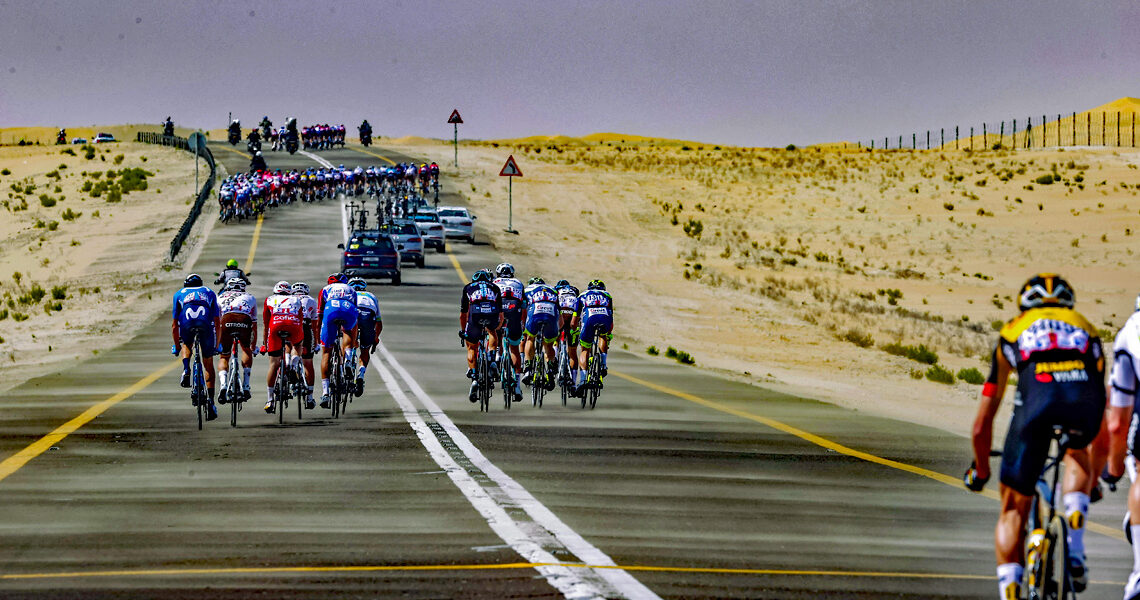
Spring racing is in full swing across North America, bringing with it the usual pre-race nerves and tactical debates among riders. Many assume amateur racing is pure chaos, where strategy takes a back seat to brute force. But the truth is, smart tactics can make all the difference—especially when others underestimate their importance. Whether you’re racing solo or on a team, understanding how to read the peloton, conserve energy, and time your moves can turn unpredictable races into opportunities for success. Here’s how to simplify the chaos and take control of your next race.

Throughout my career, reading races and team leadership became one of my biggest assets as a pro. And so, when I work with individual coaching clients and teams, their tactical approach is always a focus no matter the level of racing.
Surprisingly though, I often have to do some convincing in these conversations. I hear things like, “It’s chaos out there…every rider for themselves…you just have to race hard”. The common implication is that while tactics matter at high levels of racing, less savvy pelotons are the Wild West, and there is not much point in planning for a specific race dynamic.
Riders and teams with this attitude are missing out. The truth is almost the exact opposite; the less your competitors are thinking, the more damage you can do by following some universal tactical principles.
Simplify the Chaos
I’ve been in many long and tedious pre-race team meetings, where riders and even directors try to plan for every eventuality in a sport that makes Texas Hold ‘Em look like a simple game. Any rider can attack at any time, with any combination of other riders and any reaction from competitors. Trying to strategize around that is impossible. Instead, you can use a process to distill the race down, so you only have to keep your eye on a few key dynamics.
When you look at the start list for your event, always ask yourself, “Who thinks they have the best chance of winning on this course?” Even at a Cat 4 level, there will usually be one or two dominant teams with the horsepower to almost guarantee a result. Pick one of them as your focus. You can be confident that if an attack goes off the front without a rider from that team, they will pull it back or counter. So you don’t need to worry about a move unless one of their riders is in it. You can ignore anything else and effectively reduce your variable set from a full start list, down to a single jersey.
If you are on a team, you can take turns following those key moves. If you are an individual, you may want to refine further and ask, “Which of its riders does the dominant team trust the most to win?” There are usually only one or two “designated winners,” and you can follow those race numbers as priority number one. The same goes if there is no obvious dominant team in your race. You can pick a handful of individual riders that never seem to miss the podium and be secure in predicting that a move won’t go to the line without at least one of them.

Don’t Work For The Sake of Working
It feels very rewarding to put your nose in the wind and push hard on the pedals in a bike race. You can change the race directly with your strength, and it is a safe, uncomplicated position whether you are on the front of the peloton or a breakaway. However, these selfless efforts often negatively impact your team’s probability of a top result.
Whenever you “work” in a bike race, it should be to improve your team’s position in the race over your competition. Teams will miss a breakaway and dedicate much of their firepower to pull it back. At the same time, everyone else in the peloton gets a free ride and can counter easily over the tired riders who did all the work.
When you miss a move, your first reaction should be to identify other riders and teams that need to bring it back as much as you do. Ask for help, make deals, and call bluffs. If all that fails, use riders to try to attack across instead of bringing the field with you. As a rule in amateur racing, unless you are protecting a leader’s jersey with a well-drilled team, riding the front alone should be your last resort.
The same rule applies in a breakaway situation. If you are in a group of five but you know you aren’t the strongest or the best sprinter, you shouldn’t be the one driving the group. Even if you think a fourth or fifth would be a great result, your willingness to pull will rarely be what dictates the move’s success. Nine times out of ten, when you do more work, your fellow escapees will do less, and the result will be the same.
If you are the weakest rider, you need to pull accordingly and protect yourself from getting dropped. If you are strong but a bad sprinter, you should take a similar approach to save energy for an attack. You can also time your pulls to be on uphills, so the draft benefit for the others is minimal. In a breakaway, the odds of any one rider winning change constantly based on how much fatigue each rider is accruing throughout the race. Every hard pull with riders in your draft shifts the odds slightly out of your favour.
Ride Your Own Best Race
In my coaching work this season, I have had the opportunity to run pre-race meetings for the Vancouver-based Steed Racing masters team. The squad is stacked with strong riders, and they have a good chance of winning any race they attend on their calendar. With ten or more riders in each meeting, there could easily be confusion and even frustration over roles and the nuances of the race plan. I can usually avoid all that by asking riders to think about one question: “What is the best I can do to increase our chance of winning?”
For many, it will be a version of covering moves to keep the team on the front foot and create a numbers advantage on the road. For a few with an exceptional strength, like sprinters and climbers, it will be to save energy to use against the race’s best riders if the finale demands it. When you have a straightforward race goal, success is much easier to find, and racing becomes much more satisfying. Combine this with general tactical rules like the ones above, and you will become one of those revered riders who “is always in the right place at the right time.” That unique ability will put you at the top of the results sheet more than a higher FTP ever will.

The post Mastering Race Tactics: Simplify the Chaos and Take Control appeared first on PezCycling News.



